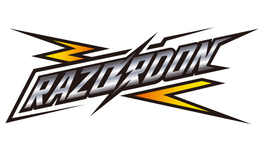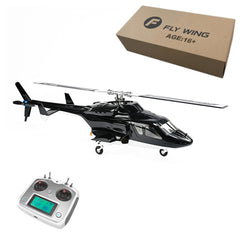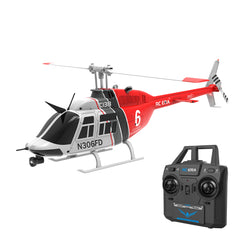RC 헬리콥터 에서 안정화 시스템이 중요한 이유
- 바람에 의한 편차 최소화: 약한 바람에도 헬리콥터를 제자리에 고정시켜 줍니다.
- 향상된 비행 안전성: 갑작스러운 움직임을 보정하여 초보 조종사의 추락 위험을 줄여줍니다.
- 향상된 비디오 화질: 항공 촬영 시 더욱 부드러운 영상을 제공합니다.
RC 헬리콥터 의 GPS 안정화 시스템
작동 방식
주요 특징
- 위치 유지(체공 모드): 바람의 변화에도 불구하고 헬리콥터를 제자리에 고정합니다.
- 자동 귀환(RTH): 단일 명령으로 또는 신호가 끊어졌을 때 헬리콥터를 이륙 지점으로 복귀시킵니다.
- 경유지 항법: 미리 프로그래밍된 비행 경로를 이용할 수 있어 항공 지도 제작 및 측량에 유용합니다.
장점과 단점
- 다양한 환경 조건에서도 뛰어난 실외 안정성을 제공합니다.
- 장거리 비행에 안전합니다.
- 정밀 지도 제작 및 GPS 지원 사진 촬영에 필수적입니다.
- 실내 또는 장애물이 많은 곳(예: 인구 밀집 지역, 빽빽한 나무)에서는 효과가 없습니다.
- 비행 전 GPS 신호 수신에 시간이 필요합니다.
최적 활용 사례
- 탁 트인 공간에서 즐기는 야외 레크리에이션 비행.
- 전문 항공 사진 및 비디오 촬영.
- 측량 및 지도 제작 프로젝트.

RC 헬리콥터 에서의 광학 흐름 위치 지정
작동 방식
장점
- 실내 및 GPS 신호가 차단된 환경에서도 작동합니다.
- 낮은 고도(일반적으로 5~10미터 이하, 모델 및 조명 조건에 따라 다름)에서 매우 정확한 위치를 제공합니다.
- 야외 비행 시 하이브리드 안정화를 위해 GPS를 보완합니다.
제한 사항
- 충분한 조명과 잘 보이는 지형 패턴이 필요합니다.
- 균일하거나 반사되는 표면에서는 성능이 저하되며, 물이나 눈밭에서는 어려움을 겪습니다.
- 고도가 높아질수록 지형 세부 사항을 파악하기 어려워 효과가 떨어집니다.
최적 활용 사례
- 실내 호버링 연습.
- GPS 신호가 약한 도심 비행.
- 부드럽고 낮은 고도에서의 영상 촬영.

RC 헬리콥터 의 기타 주요 안정화 시스템
자이로스코프(자이로 시스템)
- 단축 자이로스코프: 원치 않는 회전을 방지하기 위해 요(꼬리 회전축 제어)를 안정화합니다.
- 3축 자이로스코프(3G): 요, 피치, 롤을 제어하여 전반적인 자세 안정성을 확보합니다.
- 6축 자이로스코프(6G): 3축 자이로스코프와 가속도계를 결합하여 자동으로 수평 비행을 유지합니다.
장점: 움직임에 대한 빠른 반응; 실내외 환경 모두에서 사용 가능
제한 사항: 방향은 처리하지만 위치는 처리하지 못하므로 추가 기능 없이는 드리프트 현상이 지속됩니다.
관성 측정 장치 ( IMU )
- 자이로스코프와 가속도계를 결합하고, 방향 데이터를 얻기 위해 자력계를 추가하는 경우도 있습니다.
- 고급 비행 제어기에 필수적인 실시간 자세 감지 기능을 제공합니다.
- GPS 없이도 작동하지만, 위치 안정성을 위해 다른 시스템과의 통합이 필요합니다.
기압계 (고도 유지)
- 설정된 고도를 유지하기 위해 기압 변화를 감지합니다.
- 공중 정지 비행 및 공중 촬영 시 조종사의 작업 부담을 줄여줍니다.
- 급격한 온도 변화나 날씨 변화에 영향을 받을 수 있습니다.
나침반 ( 자기계 )
- 방향을 유지하기 위한 디지털 나침반 역할을 합니다.
- 보다 정확한 내비게이션 및 방향 유지를 위해 GPS와 함께 자주 사용됩니다.
이러한 시스템들이 서로 어떻게 연동되는가
- GPS + 광학 흐름: GPS는 실외 위치 확인을 담당하고, 광학 흐름은 실내 또는 GPS 신호가 차단된 지역에서 작동합니다. 이러한 이중 구성은 다양한 환경에서 지속적인 위치 안정성을 보장합니다.
- 자이로스코프 + 기압계 : 자이로스코프는 기체의 자세(요, 피치, 롤)를 안정화하고, 기압계는 일정한 고도를 유지합니다. 이 둘을 함께 사용하면 훨씬 부드러운 호버링이 가능합니다.
- IMU 통합: IMU는 자이로스코프, 가속도계, 자기계의 데이터를 융합하여 정밀한 자세 기준값을 생성합니다. GPS 또는 광류와 결합하면 위치 및 방향 안정성을 모두 보장합니다.
RC 헬리콥터 에 적합한 안정화 시스템 선택하기
| 파일럿 유형 | 권장 시스템 | 효과가 있는 이유 |
| 초보자 | GPS + 6축 자이로스코프 | 야외에서 자세 유지 및 자동 수평 보정 기능으로 학습이 용이합니다. |
| 실내 전단지 | 광학 흐름 + 자이로스코프 | GPS 없이도 좁은 공간에서 안정적으로 공중 부양할 수 있습니다. |
| 야외 레크리에이션 | GPS + IMU + 기압계 | 고도 유지 및 방향 정확도를 갖춘 안정적인 야외 비행. |
| 항공 사진작가 | GPS + 광학 흐름 + 나침반 | 다양한 환경에서 고품질 영상을 촬영할 수 있도록 부드럽고 정밀한 호버링 기능을 제공합니다. |
| 고급/전문가 | GPS + 광학 흐름 + IMU + 장애물 회피 | 복잡한 프로젝트를 위한 최고의 안정성, 안전성 및 자동화. |
유지보수 및 교정 팁
- 자이로스코프 및 IMU 교정
- 각 비행 세션 전에 평평한 표면에서 보정 작업을 수행하십시오.
- 교정 중에는 금속 표면이나 강한 자기장을 피하십시오.
- GPS 모듈 관리
- 위성 신호 수신 속도를 높이려면 안테나가 하늘을 잘 볼 수 있도록 설치하십시오.
- 위치 정확도를 향상시키려면 펌웨어를 최신 버전으로 유지하십시오.
- 광류 센서 유지보수
- 카메라 렌즈에 먼지가 들어가 정확도에 영향을 미치는 것을 방지하기 위해 정기적으로 렌즈를 청소하십시오.
- 패턴 감지가 제대로 되지 않는 반사면이나 균일한 표면 위를 비행하지 마십시오.
- 기압계 및 나침반 점검
- 비행 전 급격한 온도 변화를 피하여 기압계 측정값이 정확하게 유지되도록 하십시오.
- 방향이 틀어지는 것이 느껴지면 나침반을 다시 보정하십시오.
- 펌웨어 및 소프트웨어 업데이트
- 정기적인 업데이트는 센서 융합 알고리즘과 안정성 성능을 향상시키는 경우가 많습니다.









